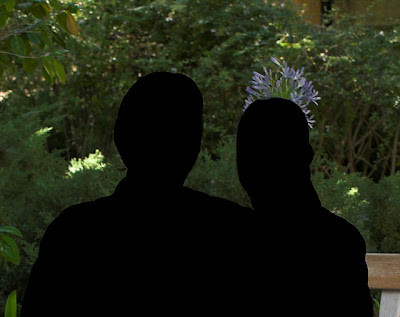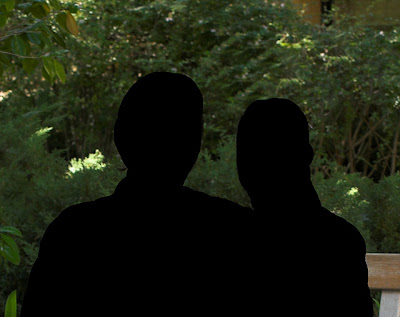Last night I completed another TFCD shoot, and it went very well (the family dressed in traditional indian cloths, very beautiful and interesting). Except the first series of shots.
I've gotten a routine down for the TFCD shoots where I arrive at a location early to set up the lights and get everything dialed in on the camera. Actually, for the last two shoots (and tonight's) I've been using the same garden (as seen at the top of this post). It works great, except last night I made a rookie mistake: when I was shooting, I didn't check the background:
Can you see the problem?
For the record, my friends were concerned about their images showing up on the internet so they wanted approval before I posted anything. For the purposes of this post, I removed them since it is the background I wanted to show.
The good news is that the flower can be easily removed by cloning, especially with an out of focus folliage background.
I also have a shot or two with no people in it, so I could easily clone the flower in to the right or left in an appropriate place. So nothing is really lost from the client's perspective, since the images I will show them will be fixed. But from my point of view, I cost myself an hour or so of cloning and editing proofs to remove the flower 'tiara' from her head in about ten images. And all of it could have been avoided, if I'd just looked through the viewfinder and took into consideration the background.
The moral:
From now on, I need to get in the habit of checking the whole picture (not just the smiles and exposure) before shooting. It will save me time (and money) in post processing.
Bonus Tip:
In this same series, I tried to keep the ISO at 200 for less image noise, so a reasonable aperture (f/7.1) gave me a shutter speed of 1/40 sec. I thought the tripod would prevent camera shake and stop motion, but I didn't consider the motion of my subjects. Well, I balanced the ambient correctly, but many of the images have significant blur from subject movement. Moral:



No comments:
Post a Comment